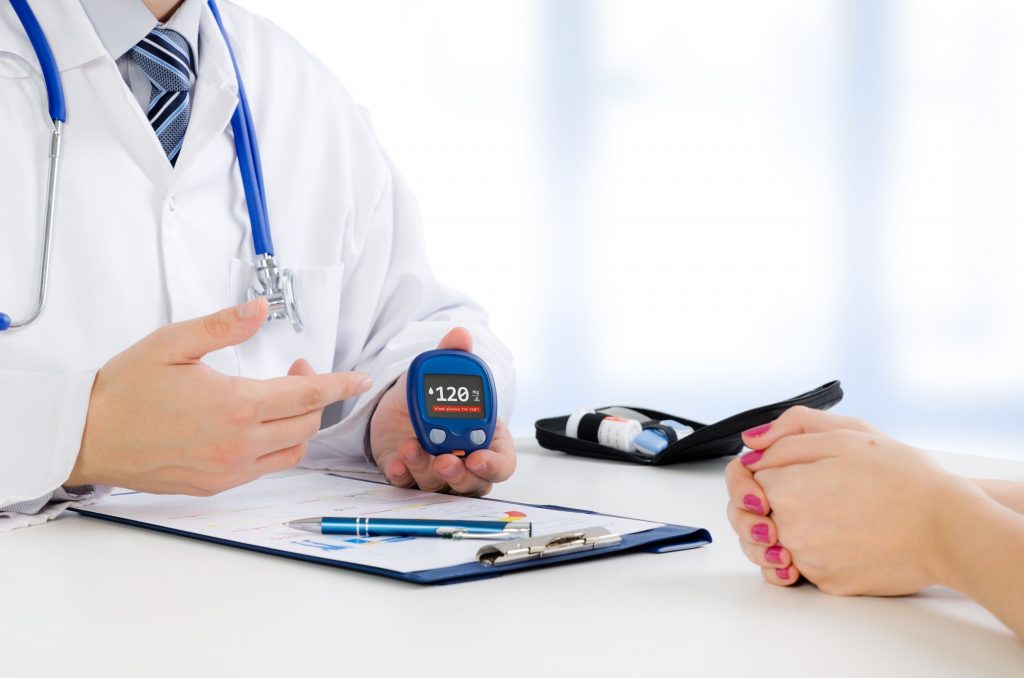Diseases May 11th, 2020
Diabetes Mellitus

Diabetes Mellitus
Introduction
Type 2 diabetes accounts for over 90 percent of cases of diabetes in the United States, Canada, and Europe; type 1 diabetes accounts for another 5 to 10 percent, with the remainder due to other causes (table 1). New information has led to increased understanding of genetic defects related to diabetes. Monogenic causes of type 2 diabetes (eg, those causing maturity onset diabetes of the young) represent only a small fraction of cases, and commonly inherited polymorphisms individually contribute only small degrees of risk for, or protection from, diabetes. Most of the genetic risk for type 2 diabetes results from complex polygenic risk factors.
This article we will focus mainly on type 1, type 2 diabetes and gestational diabetes.
Type 2 diabetes
Type 1 diabetes is characterized by destruction of the pancreatic beta cells, leading to absolute insulin deficiency. This is usually due to autoimmune destruction of the beta cells (type 1A). Testing for islet cell antibodies (ICA) or other islet autoantibodies (antibodies to glutamic acid decarboxylase [GAD] 65; insulin; the tyrosine phosphatases, insulinoma-associated protein 2 [IA-2] and IA-2 beta; and zinc transporter ZnT8) in serum may be helpful if establishing the diagnosis is important; a positive result is indicative of immune-mediated or type 1A diabetes [1]. However, the absence of pancreatic autoantibodies does not rule out the possibility of type 1 diabetes. Some patients with absolute insulin deficiency have no evidence of autoimmunity and have no other known cause for beta cell destruction. They are said to have idiopathic or type 1B diabetes mellitus.
Type 2 diabetes
Type 2 diabetes is by far the most common type of diabetes in adults and is characterized by hyperglycemia and variable degrees of insulin deficiency and resistance. It is a common disorder whose prevalence rises markedly with increasing degrees of obesity. Insulin resistance and insulin deficiency can arise through genetic or environmental influences, making it difficult to determine the exact cause in an individual patient. In addition, hyperglycemia itself can impair pancreatic beta cell function and exacerbate insulin resistance.
Distinguishing type 1 from type 2 diabetes
It is occasionally difficult to distinguish between type 1 and atypical presentations of type 2 diabetes. Patients with type 1 diabetes have an absolute requirement for insulin therapy. However, many patients with type 2 diabetes lose beta cell function over time and require insulin for glucose control. Thus, need for insulin per se does not distinguish between type 1 and type 2 diabetes. While it is known that diabetic ketoacidosis (DKA) can occur in the presence of complete insulin deficiency and it is not a typical feature of type 2 diabetes, some patients with type 2 diabetes develop DKA under certain circumstances (usually severe infection or other illness). Thus, ketoacidosis cannot be relied upon as an absolute indicator that the patient has type 1 diabetes or that long-term insulin therapy will be required.
We measure autoantibodies when the diagnosis of type 1 or type 2 diabetes is uncertain by clinical presentation:
- Thin patient with poor response to initial therapy with sulfonylureas or metformin
- Personal or family history of autoimmune disease
- Overweight or obese children or adolescents presenting with apparent type 2 diabetes, who actually may have an early presentation of type 1 diabetes
Measuring more than one antibody will increase the likelihood of a positive value, but it is also more costly. Two (ie, islet cell and GAD65) or three (insulin, GAD65, and IA-2 or GAD65, IA-2, and ZnT8) antibodies can be measured. Insulin antibodies should not be measured if the patient has received insulin therapy for ≥2 weeks, because this will generate insulin antibodies. If one or more of the antibodies is present, and especially if two or more are positive, the patient should be presumed to have type 1 diabetes and should be treated with insulin replacement therapy, as these patients respond poorly to diet and oral hypoglycemic drug therapy. In addition, during early stages in the development of type 1 diabetes, intensive insulin therapy prolongs beta cell function.
Gestational diabetes
Gestational diabetes is due to insulin-blocking hormones produced during pregnancy. This type of diabetes only occurs during pregnancy.
During pregnancy, some women develop high blood sugar levels. This condition is known as gestational diabetes mellitus (GDM) or gestational diabetes. Gestational diabetes typically develops between the 24th and 28th weeks of pregnancy. If you develop gestational diabetes while you’re pregnant, it doesn’t mean that you had diabetes before your pregnancy or will have it afterward. But gestational diabetes does raise your risk of developing type 2 diabetes in the future. If poorly managed, it can also raise your child’s risk of developing diabetes and increase the risk of complications for you and your baby during pregnancy and delivery.
What are the symptoms?
General symptoms of diabetes include:
- excessive thirst and hunger
- frequent urination
- drowsiness or fatigue
- dry, itchy skin
- blurry vision
- slow-healing wounds
Type 2 diabetes can cause dark patches in the folds of skin in your armpits and neck. Since type 2 diabetes often takes longer to diagnose, you may feel symptoms at the time of diagnosis, like pain or numbness in your feet.
Type 1 diabetes often develops more quickly and can cause symptoms like weight loss or a condition called diabetic ketoacidosis. Diabetic ketoacidosis can occur when you have very high blood sugars, but little or no insulin in your body.
Symptoms of both types of diabetes can appear at any age, but generally type 1 occurs in children and young adults. Type 2 occurs in people over the age of 45. But younger people are increasingly being diagnosed with type 2 diabetes due to sedentary lifestyles and an increase in weight.
What are the potential complications?
Complications of diabetes generally develop over time. Having poorly controlled blood sugar levels increases the risk of serious complications that can become life-threatening. Chronic complications include:
- vessel disease, leading to heart attack or stroke
- eye problems, called retinopathy
- infection or skin conditions
- nerve damage, or neuropathy
- kidney damage, or nephropathy
- amputations due to neuropathy or vessel disease
Type 2 diabetes may increase the risk of developing Alzheimer’s disease, especially if your blood sugar is not well controlled.
Prevention
There’s no known prevention for type 1 diabetes.
You can lower your risk of type 2 diabetes if you:
- control your weight and manage your diet
- exercise regularly
- avoid smoking, high triglycerides, and low HDL cholesterol levels
If you had gestational diabetes or have prediabetes, these habits can delay or prevent the onset of type 2 diabetes.




